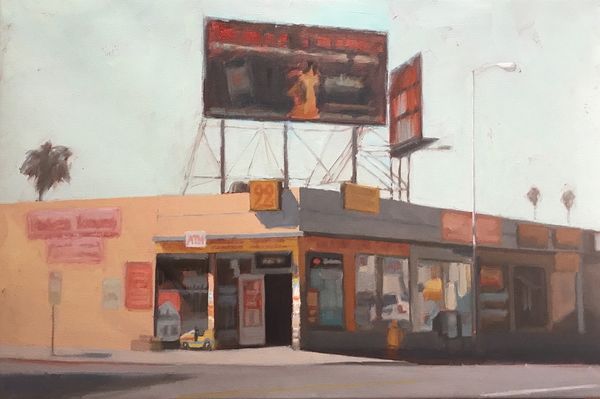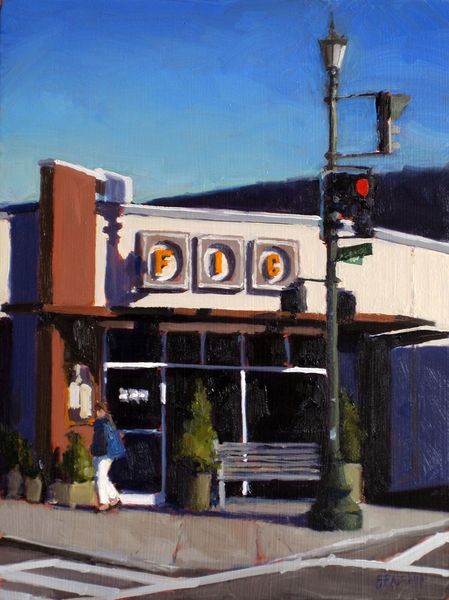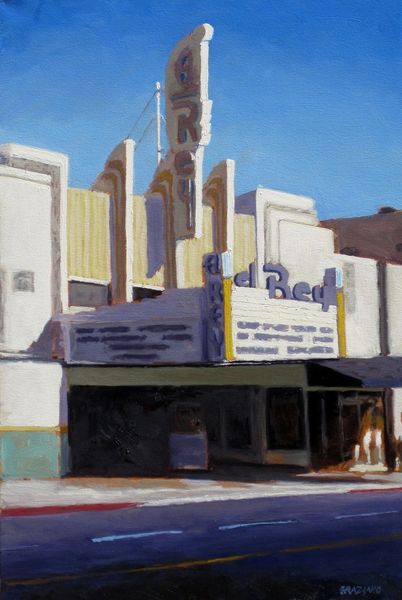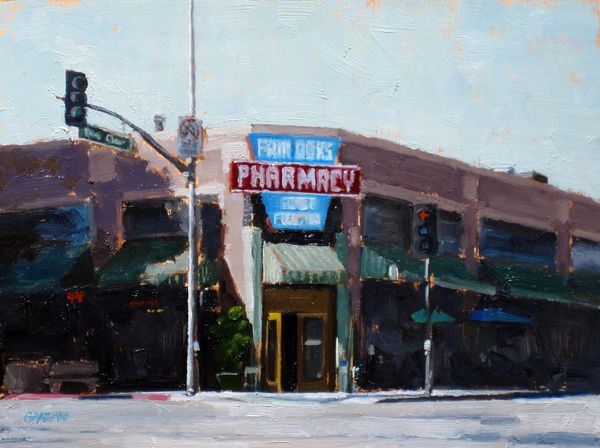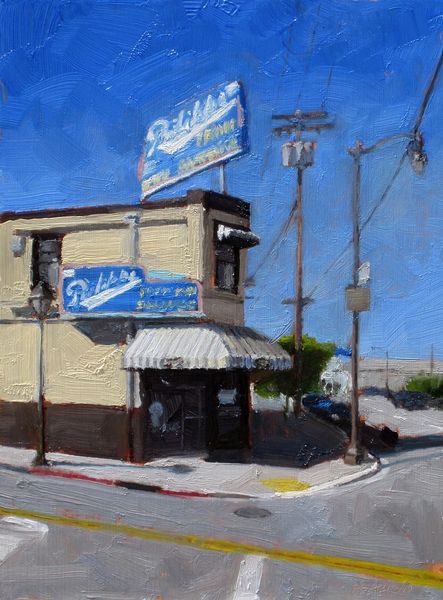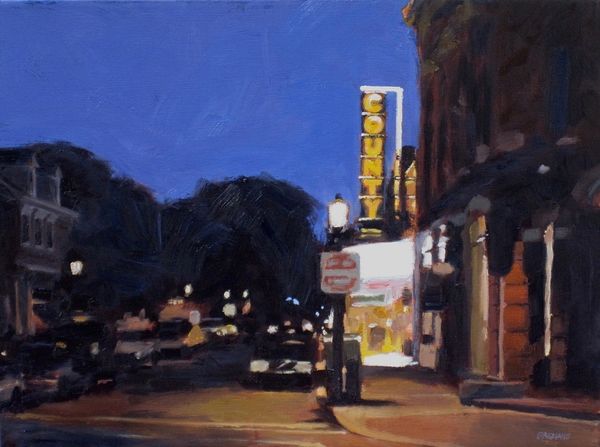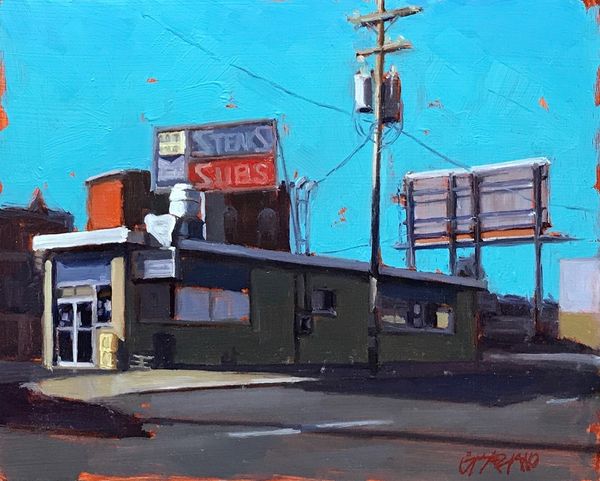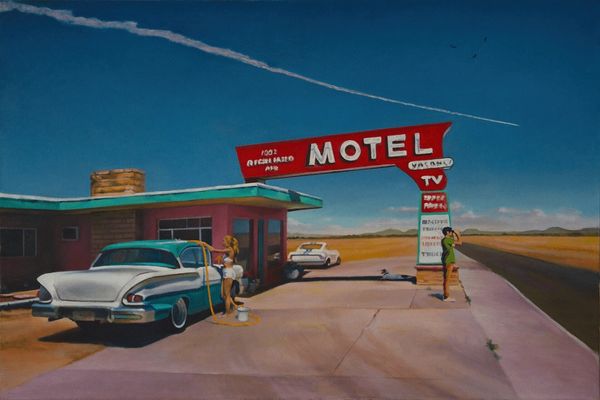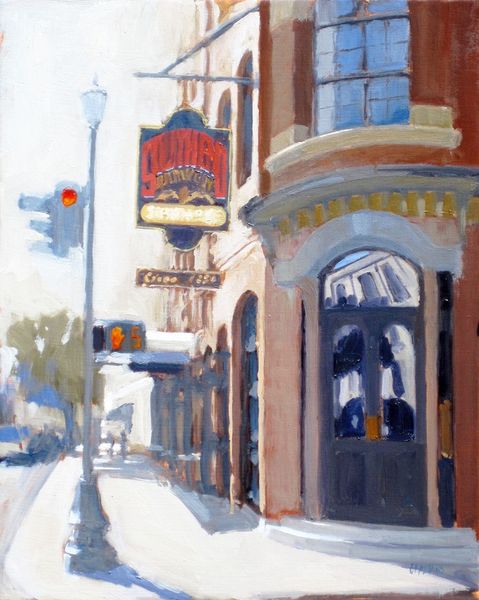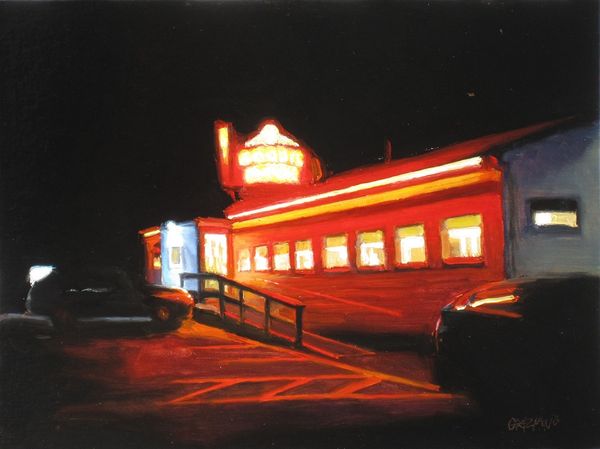
painting, oil-paint
#
photorealism
#
painting
#
impressionism
#
oil-paint
#
landscape
#
oil painting
#
cityscape
#
realism
Copyright: Modern Artists: Artvee
Editor: Here we have Dan Graziano's painting, "New Beverly Cinema," which appears to be done in oil paint. It really captures the strong daylight and architectural lines of the building, but there's also something slightly melancholic about it. What stands out to you, looking at this from a formal perspective? Curator: Indeed. Notice the geometry first, that dominating, vertical thrust created by the sign and light post – how that bisects the composition. It is echoed by verticality of the building's facades. Now look at how the horizontal, parallel bands of color – the blue sky, yellow architecture, grey pavement – push the eye laterally. The artist creates pictorial tension between these opposing structural forces. Editor: So the composition itself contributes to that feeling I had? Is there anything else in terms of color that strikes you? Curator: Observe the bold use of primary colors: the deep blues, the assertive yellows, the splashes of red. Note too how these hues, while individually vibrant, are ultimately modulated and subdued by the application of visible brushstrokes and the introduction of shadow. This restrained application prevents the image from becoming overly saturated or garish. What effect does this have on your interpretation? Editor: That makes sense; it feels real because of the layering. Is there any play with light you see here? Curator: Absolutely. The interplay of light and shadow is quite pronounced, contributing significantly to the painting's spatial qualities. Consider the cast shadows which define depth and form. Ask yourself, how does this contrast enhance the surface qualities of the forms? Editor: Wow, I never really considered all that when just glancing at it. Thanks! Curator: You're welcome. Formal analysis can bring us closer to grasping how such pictures are designed to elicit and direct particular experiences in us.
Comments
No comments
Be the first to comment and join the conversation on the ultimate creative platform.

